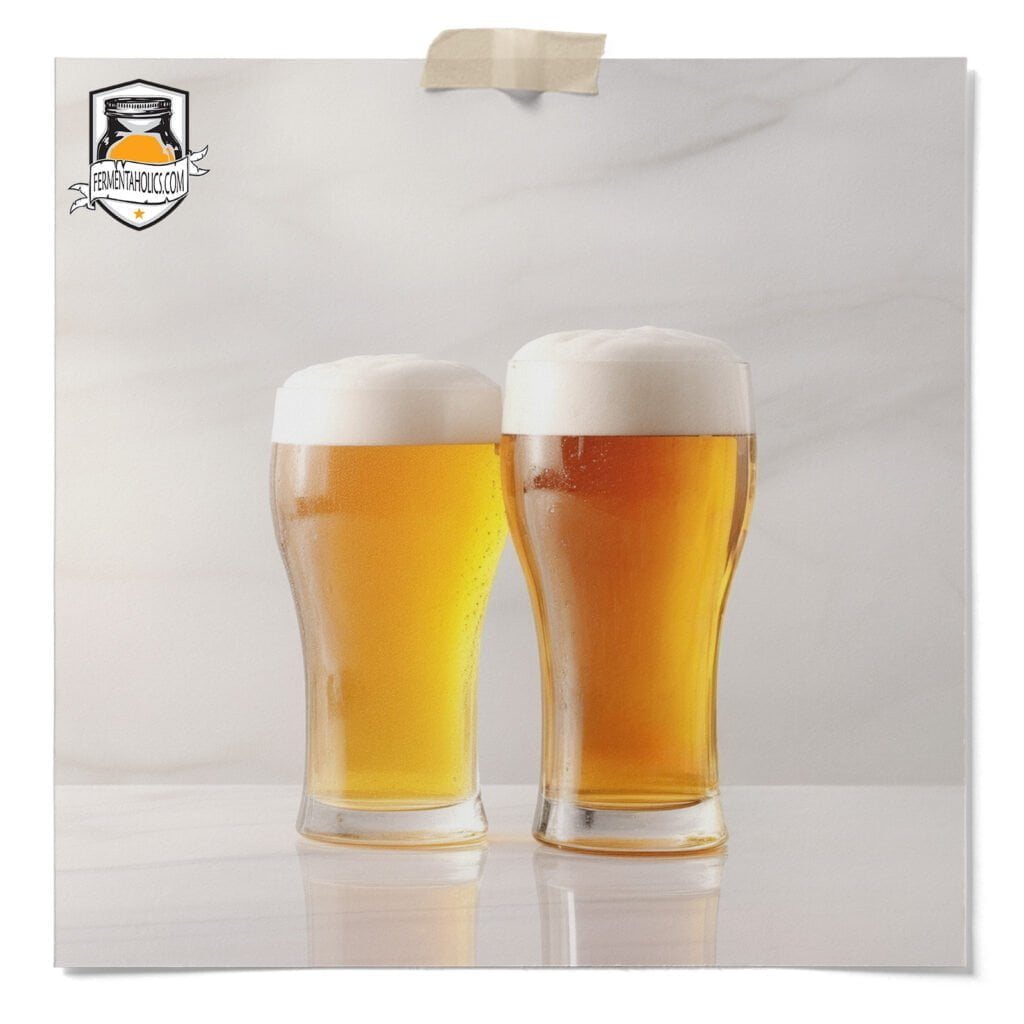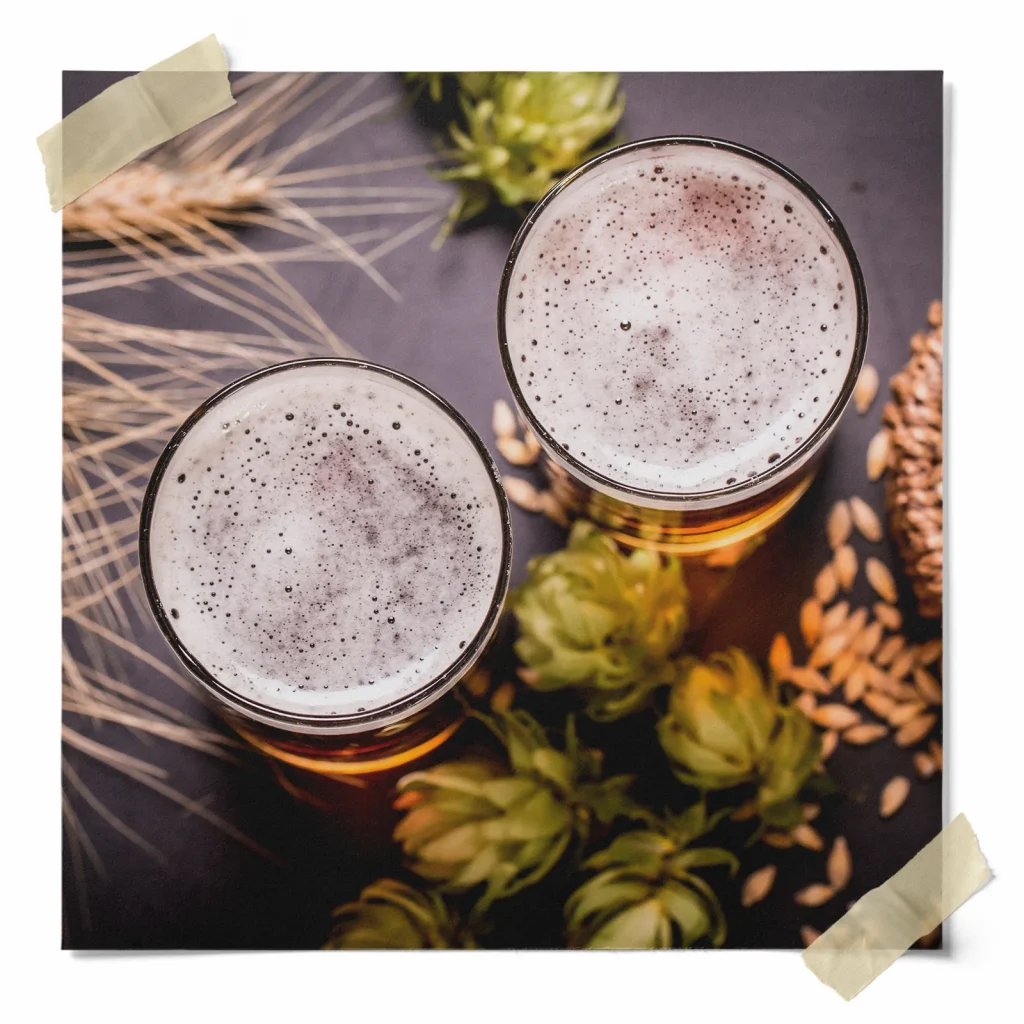

The difference between ales and lagers technically comes down to the yeast used. And since we’re getting technical, the actual type of yeast used most commonly for ales is Saccharomyces cerevisiae.
When ale yeast is pitched into the wort, it’s left to ferment between 65 and 75 °F—generally speaking, the warmer the wort, the faster the yeast ferments.

During the primary fermentation, when the majority of sugars suspended in the wort are consumed by the yeast and converted to ethanol and carbon dioxide, the layer of yeast sits on top of the liquid and slowly begins to fall to the bottom as the sugars are consumed. This process is called flocculation.
The two main points here are where ale yeast sit during fermentation (on top of the wort), and the temperature at which they are left to ferment (between 65 and 75 °F).
Some common styles of ales include the following:
As you may have guessed, the two criteria that make an ale an ale also make a lager a lager! The yeast most often used to create lagers, Saccharomyces pastorianus, is closely related to the yeast used to make ales, but there are a few key differences.
While ales are fermented between 65 and 75 °F, lagers are fermented in much colder temperatures between 45 and 55 °F.
Fun fact: “lager” means “warehouse” in German, and lagers, originating in Germany, were fermented in colder warehouses or storehouses that naturally stayed in this temperature range.

Additionally, while the yeast in an ale sticks to the top of the wort during fermentation, the yeast in a lager sit at the bottom of the fermentation chamber throughout the primary fermentation.
Some common styles of lagers include the following:
While the fermenting temperature and the level at which the yeast sit to ferment are the main differences, there are a few others.
Because the beers are brewed at very different temperatures, the time it takes for the fermentation to be completed varies as well. Yeast generally works faster in warmer temperatures, and since ales are brewed in warmer fermentation chambers, the primary fermentation finishes in about 1-2 weeks, which is 2 to 3 weeks faster than it takes a lager to go through primary fermentation.
Ale yeasts also produce more esters and phenols, which tend to give beer interesting flavors, not characteristic of the malts or hops going into them. These generally taste fruity or spicy. Lager yeasts create a “cleaner” taste, so you tend to experience more of the malt flavor nuances.
And there you have it! With the seemingly countless number of styles of beer available everywhere, it can get pretty confusing deciphering the differences. Starting at the top with the differences between ales and lagers should help to grasp the styles a bit more. Now get out there and try to see if you can taste the difference!

The main differences between ale and lager are in the type of yeast used and the fermentation temperature. Ales use Saccharomyces cerevisiae, a top-fermenting yeast, and ferment at warmer temperatures (59-77°F). Lagers use Saccharomyces pastorianus, a bottom-fermenting yeast, and ferment at cooler temperatures (46-55°F). These differences result in varying flavor profiles.
Ale flavors are often described as robust, rich, and even fruity, due to the esters produced by ale yeast during fermentation. Lagers, on the other hand, typically have a cleaner, smoother, and more mellow flavor due to their yeast type and longer, cooler fermentation process.
Ales typically ferment at higher temperatures (59-77°F) for a shorter period, while lagers ferment at lower temperatures (46-55°F) for a longer period. The yeast type also differs: ales use a top-fermenting yeast, Saccharomyces cerevisiae, whereas lagers use a bottom-fermenting yeast, Saccharomyces pastorianus.
Examples of ales include Porters, Stouts, and India Pale Ales (IPAs), while Pilsners, Bocks, and Märzens are examples of lagers.
Yeast is crucial because it ferments the sugars in the brew into alcohol. The type of yeast used and its fermentation process significantly influence the taste, aroma, and clarity of the final product.
“Top-fermenting” yeast, used in ales, refers to yeast that ferments near the surface and typically at higher temperatures. “Bottom-fermenting” yeast, used in lagers, refers to yeast that ferments at the bottom of the fermentation vessel and generally at lower temperatures.
The fruitier flavor in ales is largely due to the esters produced by the top-fermenting yeast Saccharomyces cerevisiae during the fermentation process at warmer temperatures.
Lagers are often more clear and crisp due to their cooler and longer fermentation process. This process allows more time for yeast and other particles to settle at the bottom, resulting in a clearer and cleaner beer.
Lagers undergo an extended fermentation process because they ferment at cooler temperatures with a yeast strain (Saccharomyces pastorianus) that works slowly under these conditions. This results in a longer fermentation time compared to ales.
Ale fermentation happens at higher temperatures because the yeast used in ale production, Saccharomyces cerevisiae, thrives and works faster at these temperatures. In contrast, the yeast used in lager production, Saccharomyces pastorianus, prefers cooler temperatures.
